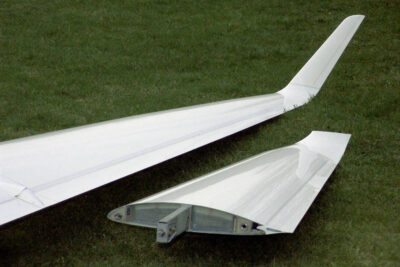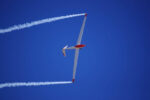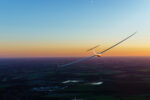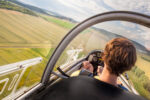Understanding the Role of Flaps in Gliders
11 September 2023 | Updated on November 05, 2024
At the heart of glider flight lies the intricate dance of aerodynamics, with each component playing a pivotal role in sustaining and directing movement through the sky. Among these components, flaps serve a significant purpose in ensuring efficient flight. Whether you’re a student pilot or an aviation enthusiast, understanding the functionality and application of flaps in sailplanes will undoubtedly enhance your appreciation of glider flight.
Gliders
Unlike conventional powered aircraft, gliders, also known as sailplanes, do not rely on engines for propulsion. Instead, they harness natural forces like rising air currents, capitalizing on their aerodynamic design. Such a distinction requires a unique approach to flight, especially in the realm of flight control surfaces, and that’s where the intricacies of flaps come into play.
You can read more about gliding here.
Glider flaps
Situated on the wings’ trailing edges, flaps act as adjustable surfaces capable of modifying an aircraft’s aerodynamic characteristics. Typically constructed from materials like composite blends or aluminum, which are consistent with the wing’s structure, their chief role is to regulate the lift and drag the glider experiences.

Functions and operations of flaps in gliders
Flaps in gliders have the following main functions:
- Enhancing Lift: At its core, lift is what keeps an aircraft airborne. Flaps contribute to this by modifying the wing’s curvature when deployed. This change results in a higher lift, enabling gliders to approach landings at slower, safer speeds.
- Controlling Descent: Descent, especially in gliders, needs precise control. Flaps allow pilots to finetune the glide angle, which in turn directly influences how rapidly the glider descends.
- Optimizing Performance: Weather conditions, especially for gliders, are unpredictable. Flaps can be adjusted to ensure that the glider performs optimally, whether the aim is to maintain altitude in weak conditions or achieve longer glides.
The ability of flaps to change a glider’s aerodynamic profile allows pilots to adapt to various flight conditions with precision.
During the different phases of flight, the glider pilot can adjust the flap settings to take advantage of these different functions and to maximize performance:
- Takeoff: During takeoff, a slight downward flap deflection can be the difference between a laborious ascent and a smooth, efficient lift-off.
- Cruise: When cruising, the key is to maintain altitude without unnecessary drag. Retracting the flaps in this phase ensures streamlined flight.
- Landing: The final approach and landing phase demands maximum control at reduced speeds. By extending the flaps, pilots can achieve the necessary lift while maintaining a controlled descent.
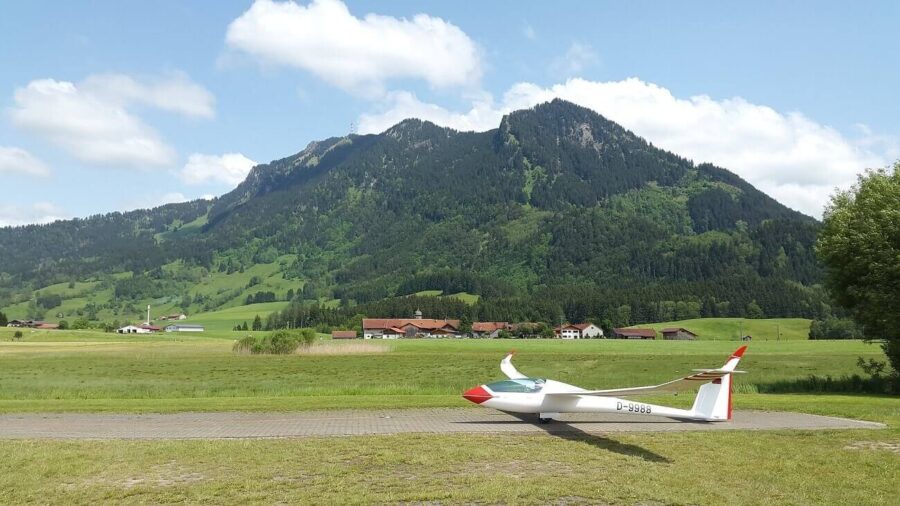

Flaps in different flight scenarios
- Thermalling: Gliders often harness rising air columns, known as thermals, to gain altitude. In these situations, pilots can adjust flaps to allow for tighter turns, ensuring they stay within the core of the thermal, where the lift is strongest.
- Ridge Soaring: Flying along a ridge or mountain range offers a unique challenge. Here, gliders rely on winds deflected upwards by the terrain to stay aloft. Proper flap adjustments in this scenario ensure that the glider maintains the right altitude without overshooting or stalling.
- Landing: The landing phase is arguably the most critical part of any flight. It’s during this phase that the glider’s speed needs to be at its lowest, but with enough lift to ensure a gentle touchdown. Flaps aid in this by providing the extra lift at these low speeds, ensuring a safe and controlled landing.
Do all gliders have flaps?
The world of gliders is diverse, and while many modern gliders come equipped with flaps, it’s not a universal feature. Flaps are mainly present in higher-performance sailplanes designed for cross-country flying and advanced soaring tasks. These gliders benefit immensely from the added control and aerodynamic versatility that flaps offer.
However, many basic training gliders and older designs might not have flaps at all. Instead, they might feature other control surfaces like dive brakes or spoilers to aid in descent and landing. The absence of flaps in these gliders is often a design choice aimed at simplicity and ease of operation, especially for beginner pilots.
In essence, while flaps are a beneficial feature in many modern sailplanes, they are not present in all gliders. The choice to include them depends on the intended function and performance goals of the specific glider design.
Safety considerations when flying a glider with flaps
It’s worth noting that while flaps can enhance performance in certain conditions, they add complexity to the glider’s design and operation. For pilots, this means more to manage during flight, especially when it comes to understanding the optimal settings for different flight conditions.
As with most things in aviation, safety is paramount. Using flaps might seem straightforward, but incorrect usage can lead to unforeseen complications:
- Overextending flaps, especially at inappropriate speeds, can place undue stress on the glider’s structure, risking potential damage
- Rapid changes in flap settings can cause sudden changes in the glider’s attitude, which might disorient the pilot or lead to loss of control.
Training is the best safeguard against these risks. Comprehensive knowledge, combined with hands-on practice, ensures that pilots can utilize flaps to their full potential while ensuring safety.
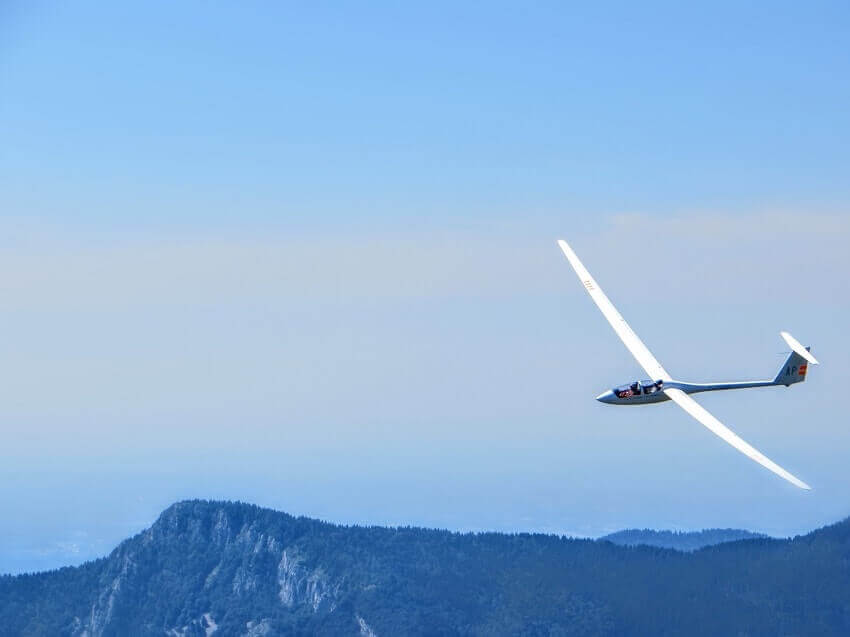

Conclusion
In the silent world of gliding, where engines are absent, and nature is your driving force, understanding every facet of your aircraft is vital. Flaps, often overlooked in discussions about aviation, play a monumental role in the realm of gliders. Whether it’s soaring high using thermals, cruising along mountain ridges, or making that perfect landing, the role of flaps is undeniable. As the saying goes, knowledge is power, and in the case of gliding, it’s the power to soar efficiently and safely.




















